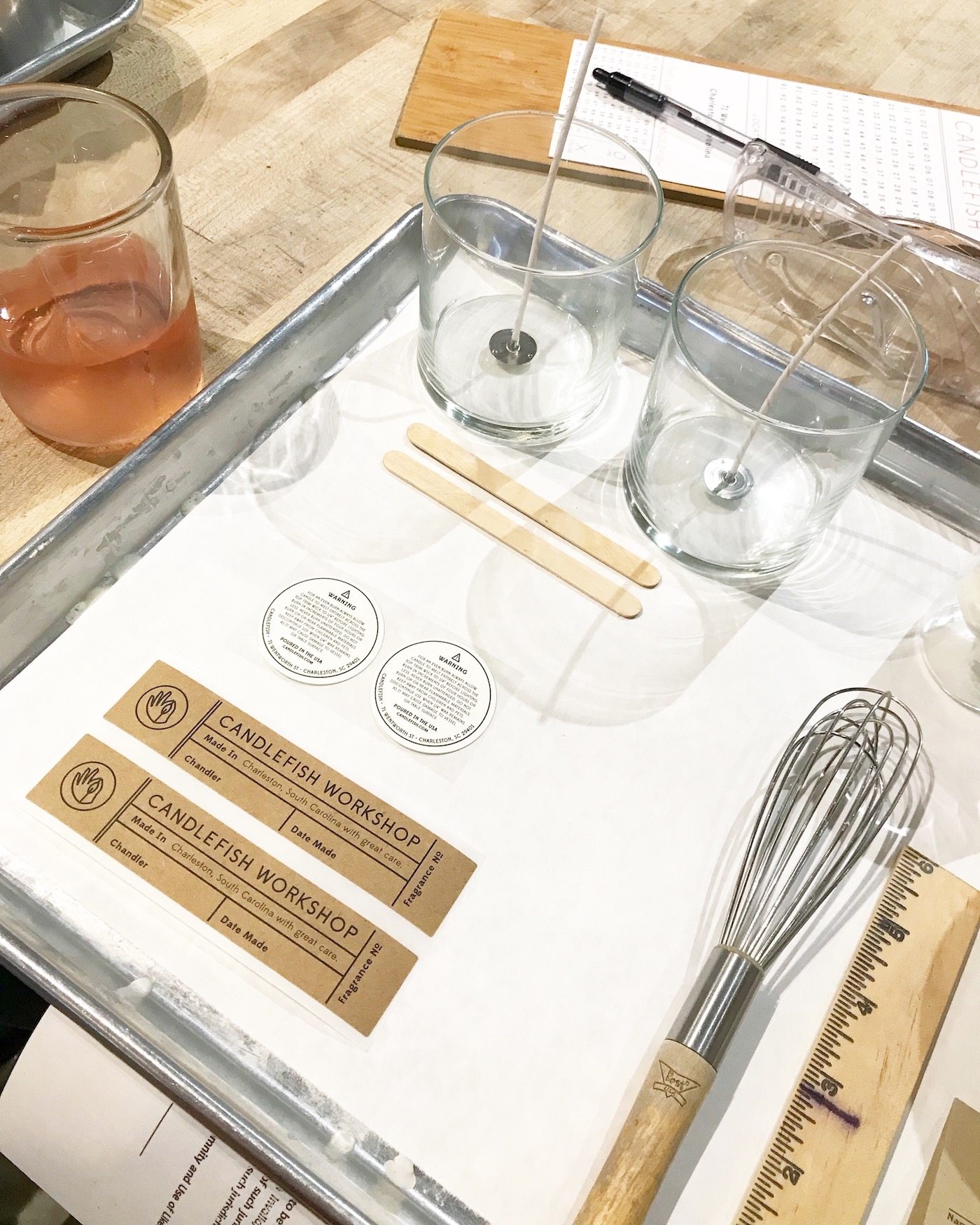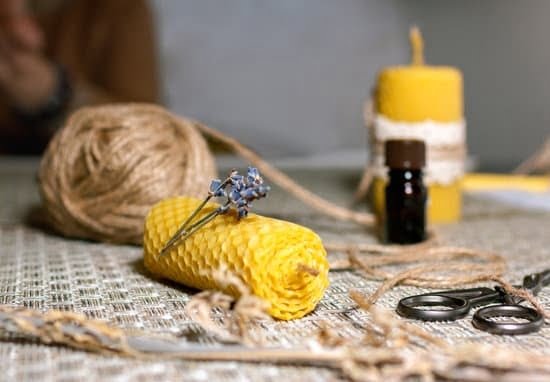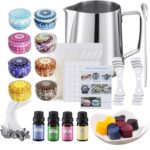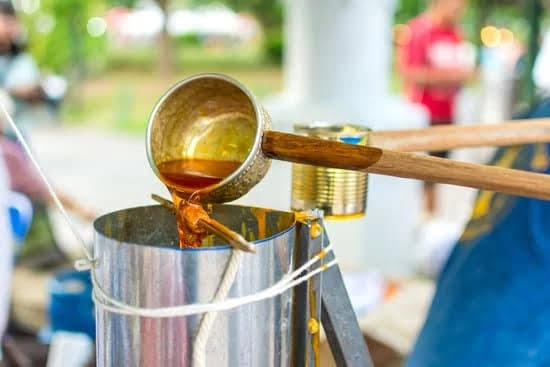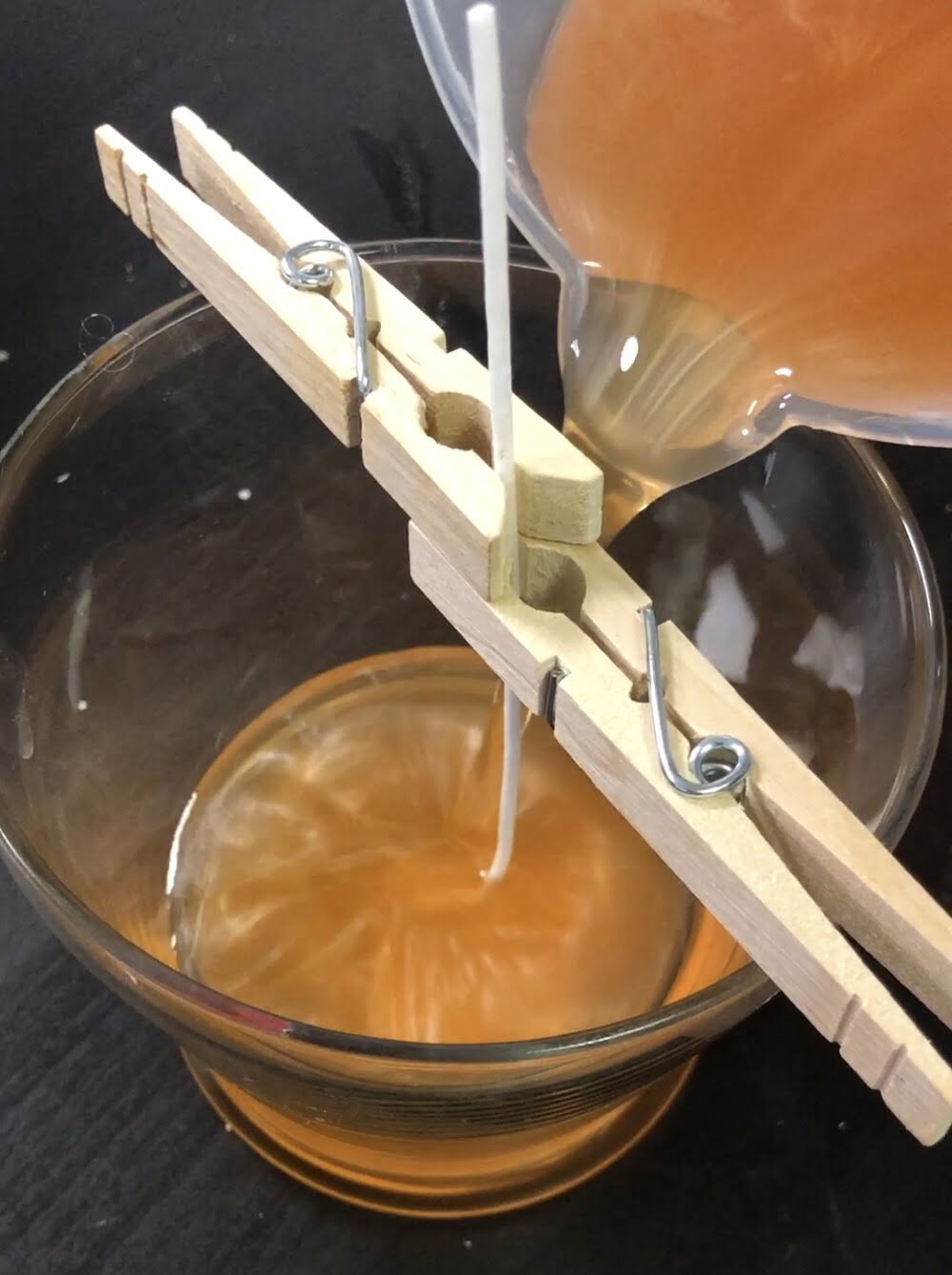Candles have been used for centuries not only as a source of light but also for various ceremonial and decorative purposes. The candles making process involves several steps that require precision and creativity. In this article, we will explore the fascinating world of candle making, from its rich history to modern techniques used today.
The art of candle making dates back to ancient times when candles were made from natural materials such as beeswax and tallow. Over the years, advancements in technology have led to the development of new methods and materials, making candle making more accessible and versatile. One key aspect of creating high-quality candles is selecting the right wax, which can significantly impact the final product.
To start your candle making journey, you will need essential tools and equipment that are easily accessible. From melting pots to wicks and molds, having the right supplies is crucial for a successful outcome. In the following sections, we will delve into the step-by-step process of making candles, including adding fragrance and color to personalize your creations. Stay tuned to discover expert tips and tricks for perfecting your candle making skills.
History of Candle Making
The history of candle making dates back to ancient times, with the earliest known candles being made by the Egyptians using reeds soaked in animal fat. Over the centuries, various civilizations developed their techniques and materials for creating candles.
In medieval Europe, tallow candles made from animal fat were commonly used, while beeswax candles were reserved for churches and royalty due to their higher cost. The Industrial Revolution brought about new methods of candle production, such as the incorporation of stearin and paraffin wax.
One significant development in modern candle making is the introduction of soy wax as an alternative to traditional paraffin wax. Soy wax is a natural and renewable resource that burns cleaner and longer than paraffin, making it a popular choice for environmentally-conscious candle makers. Additionally, soy wax has the benefit of holding fragrance oils well, resulting in highly scented candles that fill a room with delightful aromas.
In recent years, the art of candle making has experienced a resurgence in popularity as people seek creative outlets and personalized home décor items. With the availability of online tutorials, workshops, and specialty stores offering a wide range of candle making supplies, enthusiasts can easily explore this craft. Whether you prefer classic taper candles or trendy container candles, experimenting with various waxes, fragrances, and colors allows each individual to express their style through unique handmade creations.
| Key Point | Details |
|---|---|
| Soy Wax Benefits | Soy wax is a natural alternative to paraffin wax that burns cleaner and longer. |
| Creative Resurgence | The art of candle making has regained popularity with access to tutorials and supplies. |
| Personalized Creations | Experimenting with different waxes, fragrances, and colors allows for unique handmade candles. |
Importance of Choosing the Right Wax for Candle Making
When it comes to the art of candle making, one of the most crucial decisions you will have to make is choosing the right wax for your candles. The type of wax you use can greatly impact the quality, appearance, and burn time of your finished product. There are several types of wax available on the market, each with its own unique characteristics and benefits.
Types of Wax
One of the most popular options for candle making is paraffin wax, which is derived from petroleum. Paraffin wax is known for its ability to hold fragrance well and produce strong scent throw when the candle is burned. Soy wax, on the other hand, is a natural and renewable alternative that burns cleaner and longer than paraffin. Beeswax is another natural option that produces a warm, honey-like aroma and a lovely golden hue.
Factors to Consider
When choosing the right wax for your candles, there are several factors to take into consideration. These include the desired scent throw, burn time, color possibilities, eco-friendliness, and cost. It’s important to weigh these factors against each other to determine which type of wax will best suit your needs and preferences.
Importance of Quality
Regardless of which type of wax you choose, it’s essential to prioritize quality when selecting materials for your candle making projects. High-quality waxes will result in candles that burn evenly, emit consistent scents, and have a clean appearance. Investing in premium waxes may cost more upfront but will ultimately lead to higher customer satisfaction and better overall results in your candles making process.
Essential Tools and Equipment Needed for Candle Making
Candle making is an art that requires the right tools and equipment to create beautiful and long-lasting candles. Here are the essential items you will need to start your candle making journey:
Wax Melting Pot
One of the most crucial tools for candle making is a wax melting pot. This pot is specifically designed to melt wax evenly and safely. It is important to choose a pot made of heat-resistant material, such as aluminum or stainless steel, to prevent any accidents during the melting process.
Thermometer
A thermometer is an essential tool for candle making to ensure that the wax is heated to the correct temperature. Different types of waxes require different melting points, so it is important to use a thermometer to monitor the temperature accurately.
Wick Holder
A wick holder is a useful tool for keeping the wick centered in the container while pouring the melted wax. This ensures that the wick stays straight and burns evenly throughout the life of the candle.
In addition to these essential tools, other equipment such as molds, fragrance oils, color dyes, and a scale for measuring ingredients are also necessary for creating unique and personalized candles through the candles making process. By having these tools on hand, you can enjoy creating your own custom candles at home with ease.
Step-by-Step Guide to the Candle Making Process
Candle making is a beautiful art that involves creating your own custom candles using different types of waxes, fragrances, and colors. Whether you are a beginner or an experienced crafter, following a step-by-step guide can help you achieve the perfect candles every time.
Here is a simple step-by-step guide to the candles making process:
- Gather all your materials: Before you begin making your candles, make sure you have all the necessary materials and tools such as wax, wicks, fragrance oils, dye chips, and a double boiler.
- Prepare your work area: Set up a clean and organized workspace with enough ventilation to ensure safety while working with hot wax.
- Melt the wax: Use a double boiler to melt the wax gently until it reaches the appropriate temperature recommended for your specific type of wax.
- Add fragrance and color: Once the wax is melted, add fragrance oils and dye chips in desired amounts to create scented and colored candles.
- Set the wick: Place the wick in the center of your container or mold and secure it in place using adhesive or other methods to keep it straight while pouring the wax.
- Pouring the wax: Carefully pour the melted wax into the container or mold over the wick until it reaches your desired height.
Following these steps will guide you through creating beautiful homemade candles that will bring warmth and ambiance to any space. By experimenting with different fragrances, colors, and shapes, you can unleash your creativity and personalize your candle making experience.
Adding Fragrance and Color to Your Candles
One popular way to incorporate fragrance into your candles is by using candle fragrance oils. These oils are specially formulated for candle making and come in a wide range of scents, from floral and fruity to warm and cozy. It is important to carefully measure the amount of fragrance oil you use based on the type of wax you are working with, as adding too much can affect the burn time and scent throw of the candle.
When it comes to adding color to your candles, there are several options available. You can use liquid dyes, dye chips, or even natural materials like spices and herbs to achieve the desired hue. It is recommended to start with a small amount of colorant and gradually increase until you reach your desired shade. Keep in mind that different waxes may require a different amount of colorant, so testing is key to achieving consistent results in your candle making endeavors.
| Aspect | Importance |
|---|---|
| Fragrance Oils | Enhances scent throw and overall experience |
| Colorants | Adds aesthetic appeal and personal touch |
Troubleshooting Common Issues in Candle Making
When making candles, it is not uncommon to encounter some common issues that can affect the final product. Here are a few troubleshooting tips to help you overcome these challenges:
- Uneven Burning: If your candle is burning unevenly, this could be due to a few factors such as a wick that is too large or drafty conditions. To fix this issue, trim the wick to about a quarter of an inch before lighting the candle and make sure to place it in an area free from drafts.
- Sinking Center: Sometimes candles can develop a hole or sink in the center as they cool. To prevent this, try pouring your wax at a slightly higher temperature and consider using a wick holder to keep the wick centered while the candle sets.
- Frosting: Frosting occurs when white patches form on the surface of your candle, giving it a frosted appearance. This is often caused by temperature fluctuations during cooling. To reduce frosting, try cooling your candles slowly and avoid sudden changes in temperature.
Additionally, it’s important to pay attention to the type of wax you are using and ensure that it is suitable for the specific type of candle you are making. Different waxes have different melting points and characteristics, so choosing the right one can help prevent many common issues during the candle making process.
Remember that practice makes perfect when it comes to candle making, so don’t get discouraged if you encounter some challenges along the way. By following these troubleshooting tips and experimenting with different techniques, you’ll soon be able to create beautiful and high-quality candles every time. Happy candle making.
Safety Precautions to Follow When Making Candles
When engaging in the candles making process, it is essential to prioritize safety precautions to ensure a successful and hazard-free experience. One of the most crucial safety measures to follow is to always work in a well-ventilated area. This helps to prevent the buildup of fumes from melting wax and fragrance oils, which can be harmful if inhaled. Adequate ventilation also reduces the risk of fire hazards as it allows any potential flammable vapors to dissipate quickly.
Additionally, it is important to use appropriate protective gear such as gloves and eye protection when handling hot wax or working with dye or fragrance oils. Wearing these items can protect your skin from burns, irritation, and other potential injuries during the candle making process. Furthermore, make sure to keep a fire extinguisher nearby in case of emergencies and always have a clear path for quick evacuation if needed.
Another crucial safety precaution is to never leave melting wax unattended. It is easy for wax to overheat and catch fire, so it is vital to constantly monitor the temperature and stir the wax regularly while melting.
Additionally, ensure that all equipment used for candle making is clean and free from debris or any flammable materials that could pose a safety risk. By following these safety precautions diligently, you can enjoy the candle making process while prioritizing your well-being and preventing accidents.
Creative Ideas for Candle Making Projects
Candle making is a versatile craft that allows for endless creative possibilities. Once you have mastered the basics of the candles making process, you can start exploring different ideas to make unique and personalized candles. One fun project to try is creating layered candles, where you pour different colored wax layers to create a beautiful ombre effect. You can also experiment with adding dried flowers, herbs, or even small toys inside your candles for a special touch.
Another creative idea for candle making projects is to use different types of molds to create intriguing shapes and designs. Consider using silicone molds in various shapes like hearts, stars, or even animals to make eye-catching candles. Additionally, you can try your hand at making floating candles by using heat-resistant containers filled with water and placing a wick in the center. These elegant candles are perfect for adding a touch of ambiance to any room.
For those looking to add a personal touch to their candle making projects, consider customizing your candles with decoupage techniques. Use decorative paper or napkins to create unique designs on the surface of your candles, giving them a one-of-a-kind look. You can also incorporate essential oils or scented oils into your wax mixture for fragrant and soothing candles that not only look beautiful but also smell amazing when lit.
Overall, there are countless creative ideas to explore when it comes to candle making projects. Whether you’re interested in experimenting with different colors and scents or trying out new techniques like layering or molding, the possibilities are truly endless. With a little imagination and practice, you can take your candle making skills to the next level and create stunning handmade candles that are sure to impress.
Expert Tips and Tricks for Perfecting Your Candle Making Skills
Candle making is a timeless art that allows individuals to unleash their creativity and create beautiful, functional pieces. From ancient civilizations to modern techniques, the process of making candles has evolved over time, with artisans continuously refining their skills to produce exceptional results. As you embark on your candle making journey, it is essential to understand the significance of choosing the right wax, utilizing the necessary tools and equipment, and following safety precautions.
In order to perfect your candle making skills, there are various expert tips and tricks that can elevate your creations to the next level. One such tip is to experiment with different fragrances and colors to customize your candles according to your preferences or for special occasions. By adding unique scents and hues, you can truly make each candle a personalized work of art.
Additionally, troubleshooting common issues that may arise during the candle making process is crucial for achieving consistent and high-quality results. Whether it be addressing issues with air bubbles, uneven burning, or fragrance distribution, being able to identify and rectify these problems will contribute to the success of your candles. Remember, practice makes perfect, so don’t be discouraged by setbacks – persevere and continue honing your craft in order to master the candles making process.
Frequently Asked Questions
How Are Candles Made Step by Step?
Candles are typically made by melting wax, adding fragrance and color if desired, then pouring the liquid wax into a mold with a wick in the center. After cooling and hardening, the candle is ready to be used.
What Are the Ingredients to Make a Candle?
The main ingredients needed to make a candle are wax, a wick, fragrance (if desired), and dye for color (optional). Wax can be sourced from different materials such as paraffin, soy, beeswax, or palm. Each type of wax has its own unique characteristics.
What Is the Process of a Candle?
The process of making a candle involves melting the chosen wax to a specific temperature, then adding fragrance and dye. The wick is centered in the mold or container before pouring the liquid wax carefully to avoid air bubbles. Once poured, the candle needs time to cool and harden before it can be used.

Welcome to my candle making blog! In this blog, I will be sharing my tips and tricks for making candles. I will also be sharing some of my favorite recipes.

